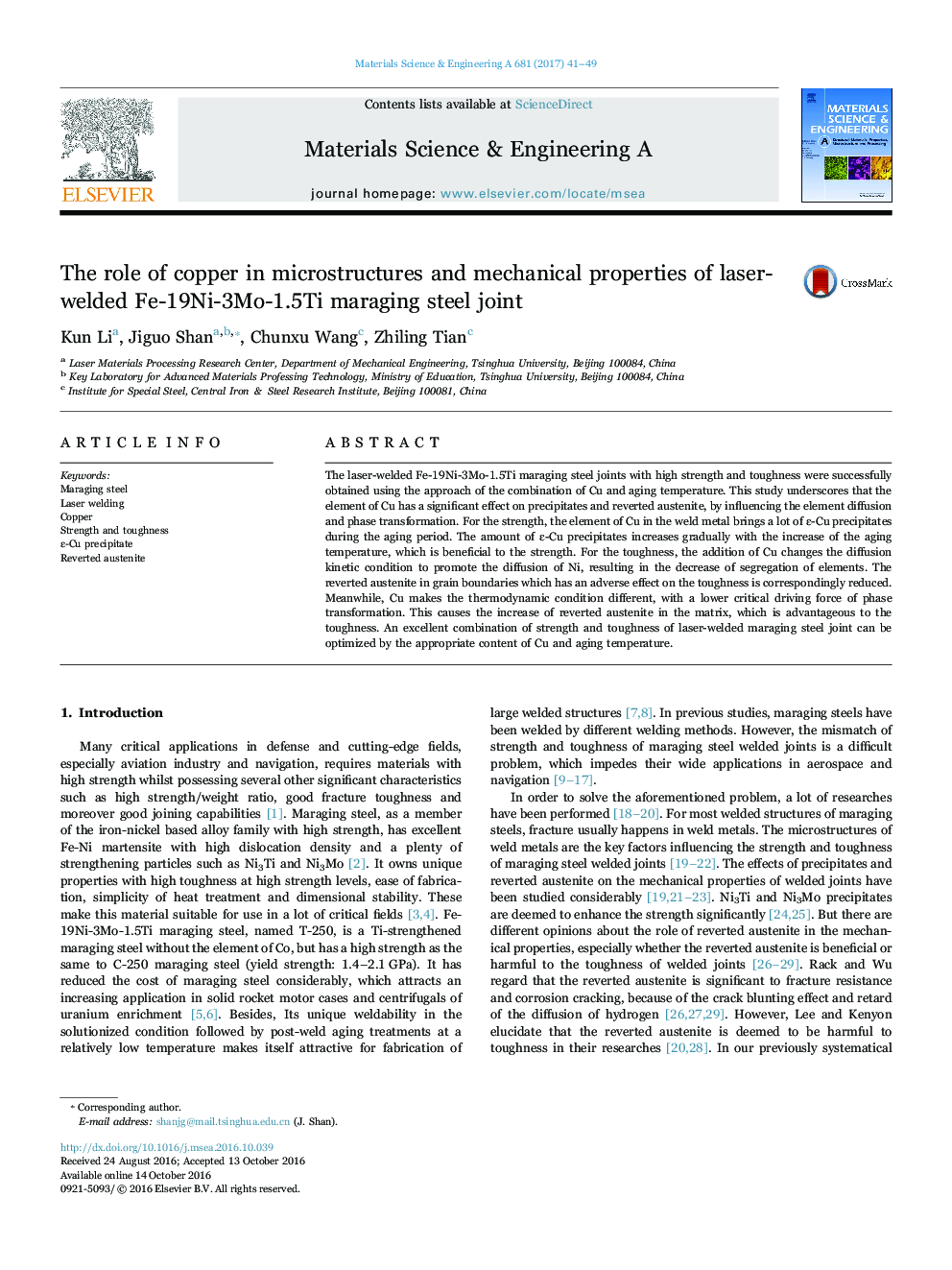| Article ID | Journal | Published Year | Pages | File Type |
|---|---|---|---|---|
| 5456467 | Materials Science and Engineering: A | 2017 | 9 Pages |
Abstract
The laser-welded Fe-19Ni-3Mo-1.5Ti maraging steel joints with high strength and toughness were successfully obtained using the approach of the combination of Cu and aging temperature. This study underscores that the element of Cu has a significant effect on precipitates and reverted austenite, by influencing the element diffusion and phase transformation. For the strength, the element of Cu in the weld metal brings a lot of ε-Cu precipitates during the aging period. The amount of ε-Cu precipitates increases gradually with the increase of the aging temperature, which is beneficial to the strength. For the toughness, the addition of Cu changes the diffusion kinetic condition to promote the diffusion of Ni, resulting in the decrease of segregation of elements. The reverted austenite in grain boundaries which has an adverse effect on the toughness is correspondingly reduced. Meanwhile, Cu makes the thermodynamic condition different, with a lower critical driving force of phase transformation. This causes the increase of reverted austenite in the matrix, which is advantageous to the toughness. An excellent combination of strength and toughness of laser-welded maraging steel joint can be optimized by the appropriate content of Cu and aging temperature.
Related Topics
Physical Sciences and Engineering
Materials Science
Materials Science (General)
Authors
Kun Li, Jiguo Shan, Chunxu Wang, Zhiling Tian,
